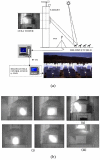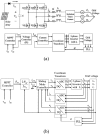Sun tracking systems: a review
- PMID: 22412341
- PMCID: PMC3297124
- DOI: 10.3390/s90503875
Sun tracking systems: a review
Abstract
The output power produced by high-concentration solar thermal and photovoltaic systems is directly related to the amount of solar energy acquired by the system, and it is therefore necessary to track the sun's position with a high degree of accuracy. Many systems have been proposed to facilitate this task over the past 20 years. Accordingly, this paper commences by providing a high level overview of the sun tracking system field and then describes some of the more significant proposals for closed-loop and open-loop types of sun tracking systems.
Keywords: solar orientation; solar position; sun sensor algorithm; sun tracking system.
Figures









References
-
- Raasakka B. Solar skylight apparatus. Renew. Energ. 1997;12:117.
-
- Kowalski S. Solar powered light fixture. Renew. Energ. 1997;11:399.
-
- Popat P.P., Arlington V.A. Autonomous, low-cost, automatic window covering system for daylighting applications. Renew. Energ. 1998;13:146.
-
- Badescu V. Different strategies for maximum solar radiation collection on Mars surface. Acta Astronaut. 1998;43:409–421.
-
- Algifri A.H., Al-Towaie H.A. Efficient orientation impacts of box-type solar cooker on the cooker performance. Solar Energ. 2001;70:165–170.
LinkOut - more resources
Full Text Sources
Other Literature Sources
Miscellaneous

